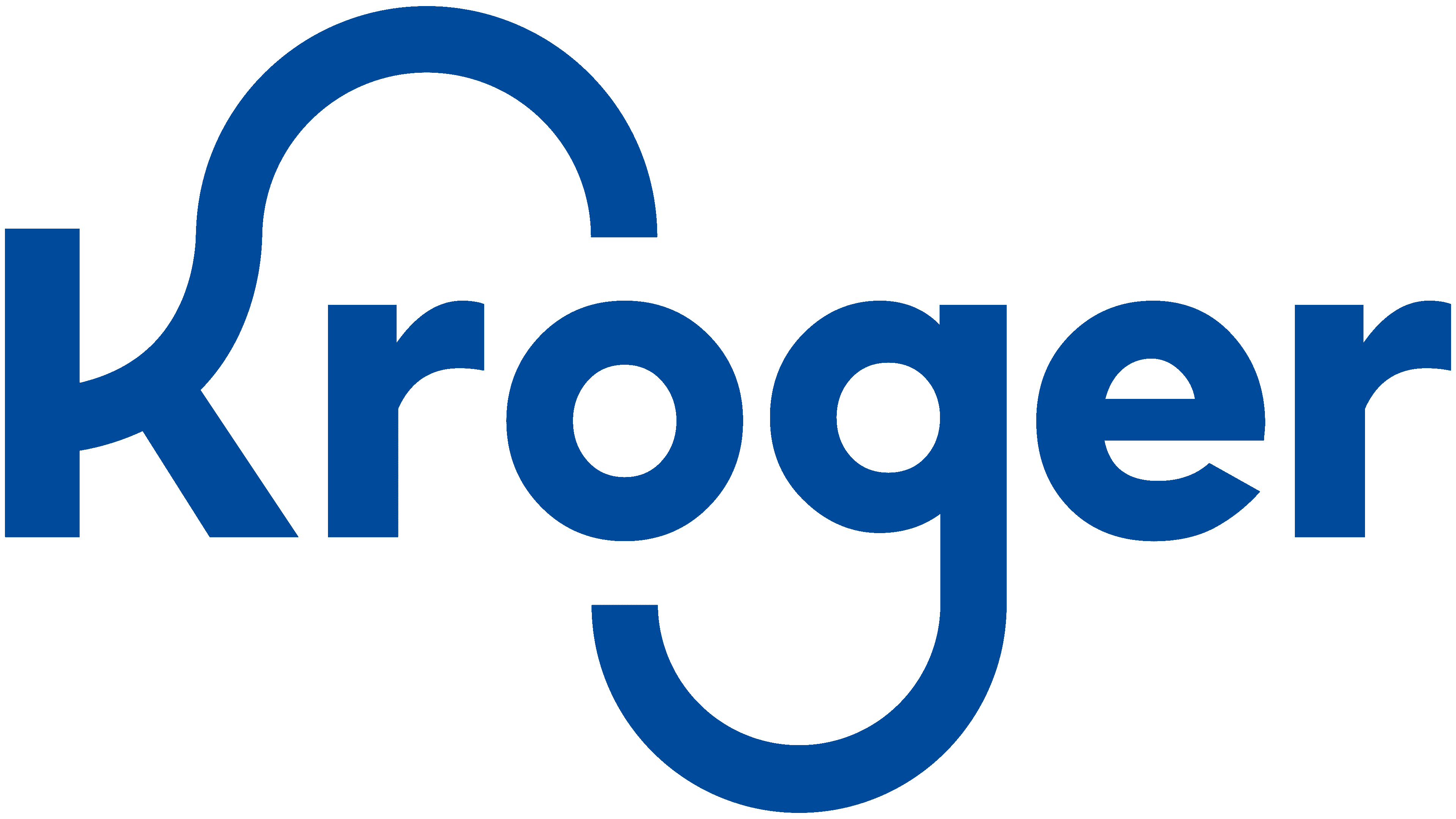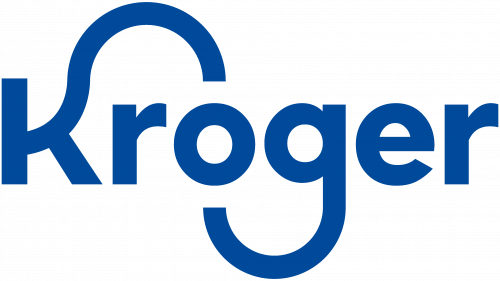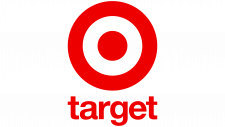Kroger Logo
The Kroger Co., operating in the U.S., is a leader in the grocery retail sector. It runs a variety of stores, including supermarkets, multi-department stores, and marketplace stores. The entity is public, with stakeholders having ownership. Its primary market remains the United States, focusing on delivering diverse products, including groceries, pharmaceuticals, and general merchandise. Kroger continues to evolve its services, offering online ordering and delivery to cater to the changing needs of consumers. The firm’s commitment to quality and customer-centric approach positions it prominently in the competitive retail landscape.
Meaning and history
The Kroger Co. has a storied history, originating in 1883 when Barney Kroger invested his life savings of $372 to open a grocery store in Cincinnati. From its inception, Kroger has witnessed continuous growth and expansions, albeit maintaining its commitment to high quality and customer satisfaction.
Through a series of acquisitions, including the amalgamation of Harris Teeter, Roundy’s, and more, Kroger has significantly broadened its market presence and diversified its portfolio. It’s remained a public company, with no drastic ownership transitions, but its stakeholders have changed over time through stock transactions.
Kroger has evolved its operational strategies, incorporating advanced technologies and focusing on sustainability. It’s pivoted from purely brick-and-mortar to embracing e-commerce, offering innovative services like online ordering, curbside pickup, and home delivery, thus meeting the dynamic needs of its customer base.
The company’s enduring commitment to serving communities, its innovative strides in retail technology, and its dedication to sustainability and quality have kept Kroger at the forefront of the grocery retail sector, creating a legacy that intertwines with the evolution of American retail landscapes. Its constant adaptations and expansions encapsulate its journey, depicting a narrative of resilience and commitment to customer-centric values and quality services.
1883 – 1902
In the beginning stages, the distinctive emblem was characterized by the textual representation “Great Western Tea Co,” inscribed in fine black fonts embellished with tiny serifs. This inscription was placed juxtaposed against a backdrop manifested by a horizontal rectangular shape of lighter shade. Above the moniker of the store, there existed a subtle mention of the article “the,” which was aesthetically flanked by slender lines on its lateral sides. This initial visualization of the brand’s identity played a pivotal role in carving its niche, subtly conveying its essence through a simplistic yet effective graphical representation, emphasizing the company’s foundational identity in the tea business, and hinting at the quality and tradition that the brand aimed to represent.
1902 – 1945
To foster a sense of trust among consumers and to underscore the substantial nature of his enterprise, the proprietor opted for a revamped logo. It projected a sense of professionalism and simplicity, devoid of any superfluous elements – showcasing solely a broad, prominent inscription. The designation “Kroger” was presented in bold, block letters. These characters were concise, regimented, evenly spaced with meticulous proximity to one another. This new visual identity was conceived to convey a message of reliability and seriousness, emphasizing the solid presence of the brand in the marketplace while maintaining an aesthetic of minimalist clarity, resonating with the customers who valued straightforwardness and authenticity in their shopping experience.
1945 – 1946
The 1945 overhaul manifested a daring and steadfast emblem for the brand, featuring formidable title case inscription nestled within a refined serif typography, characterized by robust strokes and substantial, yet cultivated serifs. The scripting was encapsulated in grey, juxtaposed against a black tableau, and was accentuated beneath by a slender, expansively elongated grey banner, bearing a black uppercase annotation upon it. This reimagination was not merely a visual adjustment but a strategic enhancement to encapsulate the brand’s evolution, intertwining elegance with solidity, and subtly infusing nuances of sophistication and strength, reflecting the brand’s ethos and values in every intricate detail.
1946 – 1961
After achieving considerable renown and establishing brand recognition, the chain of supermarkets underwent a branding overhaul, emerging with an inventive logo. It incorporated a singular inscription – the moniker of the stores. For an added touch of uniqueness, the designers elongated the upper segment of the capital “K” and the lower segment of the small “g,” creating two arches nearly touching the letter “o.” The “e” sported a slanted right side (appearing subtly truncated), and the “r” bore resemblance to a capital “Y.” Serving as the backdrop for the word “Kroger” was a rectangle in a shade of deep violet, maintaining regular proportions. This nuanced alteration in design not only enhanced its aesthetic appeal but also fortified the brand’s identity, blending classic elements with contemporary innovations, making it stand out distinctly in the competitive marketplace.
1959 – 1961
In 1959, the artistic rendition of the lettering was intensified and reformulated using a substantial serif typeface, with the prolonged and curved lines of two letters, echoing the essence of its predecessor’s design. This updated emblem embraced a grayscale tone, punctuated with snippets of text in petite, lowercase, sans-serif font. This transformation not only depicted an evolution in visual representation but also aimed to reinforce brand identity by employing robust and distinctive typographic elements, harmonizing past concepts with newly infused vigor and color dynamics, thereby ensuring a nuanced and cohesive visual experience.
1961 – 2019
In 1961, the firm unveiled a renewed iteration of its distinguishable wordmark, a design that persisted with the brand over fifty years. It consisted of robust, sans-serif typography bathed in a refined hue of blue and set against a pristine white backdrop. The idea involving the curved, joyful bars underwent modernization and refinement, culminating in a badge appearance that was potent and fashionable. This revamping aimed at blending contemporary aesthetics with a subtle touch of joviality, ensuring the brand’s visual identity remains timeless and resonates with evolving consumer preferences, reflecting a seamless fusion of modernity and style.
1961 – 2001
In the subsequent iteration, the designers opted for blue, forsaking the purple, and discarded the rectangle, substituting it with an oval encased in a red boundary. A shift was also made in the typography, leaning towards a more restrained and sober style. Consequently, the characters in the logos of that era were uniform, with the exception of “K” and “g,” maintaining their extended form. This modification not only breathed new life into the brand’s visual representation but also catered to a more contemporary and refined aesthetic, subtly highlighting the dynamic and evolving nature of the brand in tune with market trends and consumer preferences. The changes, while seemingly minor, played a crucial role in maintaining the brand’s relevance and appeal in an ever-evolving marketplace.
2001 – 2014
In this phase, the logo underwent enhancements, obtaining a reflective effect that endowed it with a three-dimensional aspect. This semblance of depth was achieved through the inclusion of sheen and a ‘metallic’ texture, which appeared to dance in sunlight, mirroring a segment of the window. This innovative transformation not only revitalized the emblem’s visual appeal but also incorporated a sense of modern sophistication, making the logo seem more tangible and lively to the observer. This nuanced approach to design accentuated the brand’s progressive nature and its commitment to staying abreast with contemporary design tendencies, ensuring its visual elements resonated well with evolving consumer tastes and perceptions. The augmented dimensionality and reflective interplay brought forth by these modifications offered a fresh perspective, underscoring the brand’s adaptability and its proclivity for modernism.
2004 – Today
A logo that distinctly makes its mark is that of Kroger. It features the word “Kroger” in bold Red letters, positioned beneath a rhomboid shape. This white space, enclosed within the four distinct colors, symbolizes a contemporary abstract portrayal of the continental United States. The states of Washington, Maine, Florida, and Texas are depicted at the various vertices, serving as representative points. This unique design interweaves simplicity with depth, providing a modern visualization while subtly embedding geographical nuances, reflecting a thoughtful approach to incorporating multifaceted elements within a seemingly straightforward logo, enriching the brand’s visual narrative.
2014 – 2019
The 2014 makeover resurrected the blue roundel of the 1960s, yet it refined its color scheme to encompass merely two hues, substituting the prominent red border with a more delicate blue one. Additionally, there was a subtle modification in the blue tint employed for this emblem— it transitioned to a more subdued and paler version. This transformation is indicative of the brand’s adherence to minimalism and its endeavor to blend retrospective design elements with a more contemporary and sophisticated aesthetic, crafting a visual identity that is both nostalgic and in tune with modern design sensibilities. The attention to nuance in color adjustments reflects a meticulous approach to brand representation, emphasizing a harmonious and refined visual appeal.
2019 – Today
Simultaneously with the foundational logo, a supplementary one emerged, a design that continues to mark the brand’s fuel stations today, taking the form of a diamond-shaped symbol encompassing abstract elements. Within this geometric frame, spots of red, blue, yellow, and light blue occupy space in an undefined arrangement. Encircling the icon is a subtle gray outline. Beneath this diamond, the commercial chain’s name is prominently displayed, adopting a distinctly varied font, devoid of extended characters. The “r” characters in the design possess precisely trimmed tops, while the “g” features a unique upward extension, also exhibiting a straight, clean cut. This variant of the logo accentuates distinctiveness in form and color, subtly underscoring the brand’s versatile identity and its multifaceted approach to market presence, ensuring recognizability across different service domains. The abstraction within the design resonates with modern sensibilities, offering a diverse visual narrative to the brand’s extensive consumer base.






















